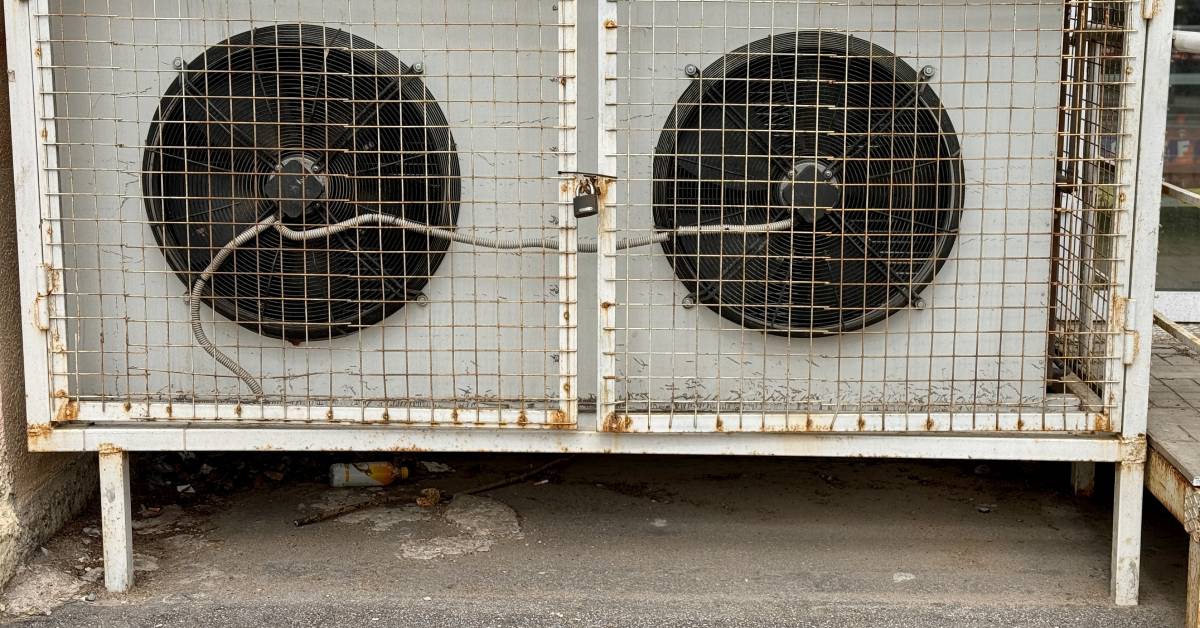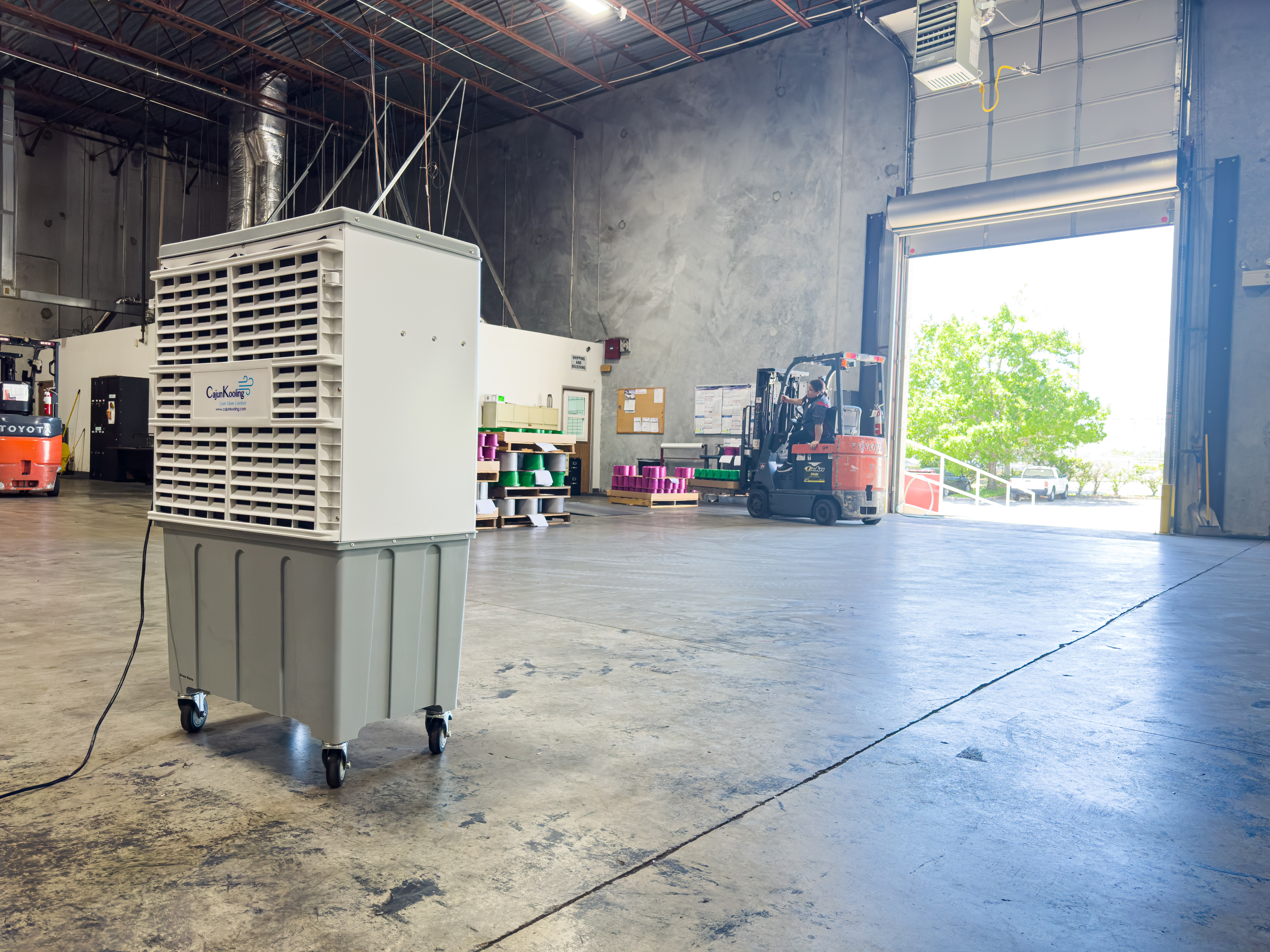Evaporative Cooling 101: How Do Swamp Coolers Work?

These days, everyone is on the lookout for cost-efficient and eco-friendly cooling options, and evaporative cooling has emerged as a popular choice. Swamp coolers, in particular, offer an economical and sustainable solution, appealing to those who are environmentally conscious and budget-minded.
But what exactly are swamp coolers, and how do they work in terms of evaporative cooling? Explore the inner workings of swamp coolers and learn about their benefits to determine whether this cooling option will suit your needs.
Understanding Evaporative Cooling
Evaporative cooling harnesses the natural process of water evaporation to cool the air. When water evaporates, it absorbs heat from the surrounding environment, resulting in a drop in temperature. This simple yet effective principle provides the foundation for swamp coolers, making them a viable alternative to traditional air conditioning.
Unlike air conditioners that use refrigerants, evaporative cooling relies solely on water and air movement, reducing the environmental footprint. This method not only saves energy but also helps maintain humidity levels, offering a unique blend of comfort and sustainability. By leveraging the power of evaporation, swamp coolers provide an efficient cooling solution, particularly in dry and arid climates.

How Do Swamp Coolers Work?
As mentioned, swamp coolers operate on the principles of evaporation and air circulation. When water molecules change from liquid to gas, they absorb heat from the air, lowering the temperature. This natural process is used to cool indoor spaces effectively.
Key Components of Swamp Coolers
Swamp coolers are composed of several essential parts, including:
- Absorbent pads: These wet pads play a vital role, as they provide a large surface area for evaporation to occur.
- A water distribution system: A pump circulates water over the absorbent pads, ensuring they remain wet to facilitate proper evaporation.
- A fan for air intake: A fan draws warm air into the cooler, passing it over the wet pads. The air loses its heat as it comes into contact with the water, resulting in cooler air for circulation.
Swamp coolers stand out for their simplicity and effectiveness, relying on basic principles to achieve powerful cooling that can keep both homes and businesses cool.
Swamp Coolers vs. Traditional Air Conditioning
When it comes to cooling your space, choosing between a swamp cooler and traditional air conditioning can be challenging. Here’s a closer look at how they compare.
Energy Efficiency
Swamp coolers are renowned for their energy efficiency. They consume significantly less electricity than air conditioners, thanks to their straightforward mechanisms that don’t rely on compressors or refrigerants. This translates to lower utility bills and reduced greenhouse gas emissions.
Environmental Impact
By avoiding the use of harmful refrigerants, swamp coolers have a gentler impact on the environment. They promote sustainable cooling by utilizing renewable resources—water and air—making them a preferred choice for eco-conscious consumers.
Suitability for Different Climates
Swamp coolers are most effective in climates where low humidity enhances the evaporation process. In such environments, they can provide superior cooling performance while maintaining indoor air quality.
For those living in regions with higher humidity levels, air conditioning systems may be more suitable. These systems extract moisture from the air, providing a cooler and drier environment.
Considerations When Using Evaporative Cooling
While evaporative cooling presents numerous advantages, certain considerations should be taken into account to maximize its effectiveness.
Optimal Conditions for Performance
Swamp coolers perform best in dry climates with low humidity, where evaporation occurs rapidly. In humid areas, their cooling efficiency may be limited, necessitating supplementary cooling methods.
Regular Maintenance and Care
To ensure optimal performance, swamp coolers require routine maintenance. This includes cleaning and replacing the pads, checking the water levels, and inspecting the fan and motor for any issues. Proper upkeep guarantees longevity and consistent cooling performance.
Sizing and Placement
Selecting the right size and location for a swamp cooler is crucial for its efficacy. Consider the square footage of the space and the airflow requirements to choose an appropriately sized unit. Strategic placement near windows or doors can enhance cross-ventilation and cooling efficiency.

Applications for Evaporative Cooling
Evaporative cooling’s versatility extends to various settings, offering practical solutions for both residential and commercial applications.
Residential Use Cases
In homes, swamp coolers provide an energy-efficient way to keep living spaces comfortable. They’re ideal for cooling bedrooms, living rooms, and outdoor patios, offering a refreshing breeze during hot summer months.
Commercial Applications
Businesses benefit from swamp coolers in warehouses, retail spaces, and offices. These coolers create a comfortable working environment for employees and customers while curbing energy expenses.
Industrial and Agricultural Settings
Industrial businesses and farms can also leverage the cooling power of swamp coolers to regulate temperatures in factories, greenhouses, and barns. By maintaining stable conditions, these businesses can enhance productivity and protect goods and livestock from excessive heat.
Future Trends in Evaporative Cooling Technology
The evolution of evaporative cooling technology continues to improve the efficiency and functionality of this method. Here are some emerging trends to look out for.
Innovations in Materials and Design
Advancements in materials, such as high-performance pads and energy-efficient fans, enhance the cooling capacity of swamp coolers. These innovations optimize evaporation rates and airflow, making them more effective and reliable.
Improved Energy Efficiency
Recent advancements in evaporative cooling have significantly improved energy efficiency, further enhancing the appeal of swamp coolers as an eco-friendly alternative to traditional air conditioning. Innovations in fan technology and water management systems have reduced electricity consumption while maximizing cooling output.
Integration With Smart Home Systems
Smart home integration allows users to control swamp coolers remotely, adjusting their settings and monitoring their performance through mobile apps. This connectivity enhances convenience and ensures optimal cooling tailored to individual preferences.
Leveraging Efficiency With Swamp Coolers
Evaporative cooling offers an enticing alternative to conventional air conditioning. Its energy efficiency, environmental benefits, and versatility make it an appealing choice for those seeking sustainable cooling solutions. By understanding how swamp coolers work, their advantages, and proper usage considerations, individuals and businesses can make informed decisions about incorporating evaporative cooling into their spaces.
If you’re looking for reliable evaporative coolers at an affordable price, Cajun Kooling makes it easy to find a unit that suits your lifestyle and budget. See how our cooling solutions can make your home or business more comfortable and efficient when you browse our selection of coolers today.





